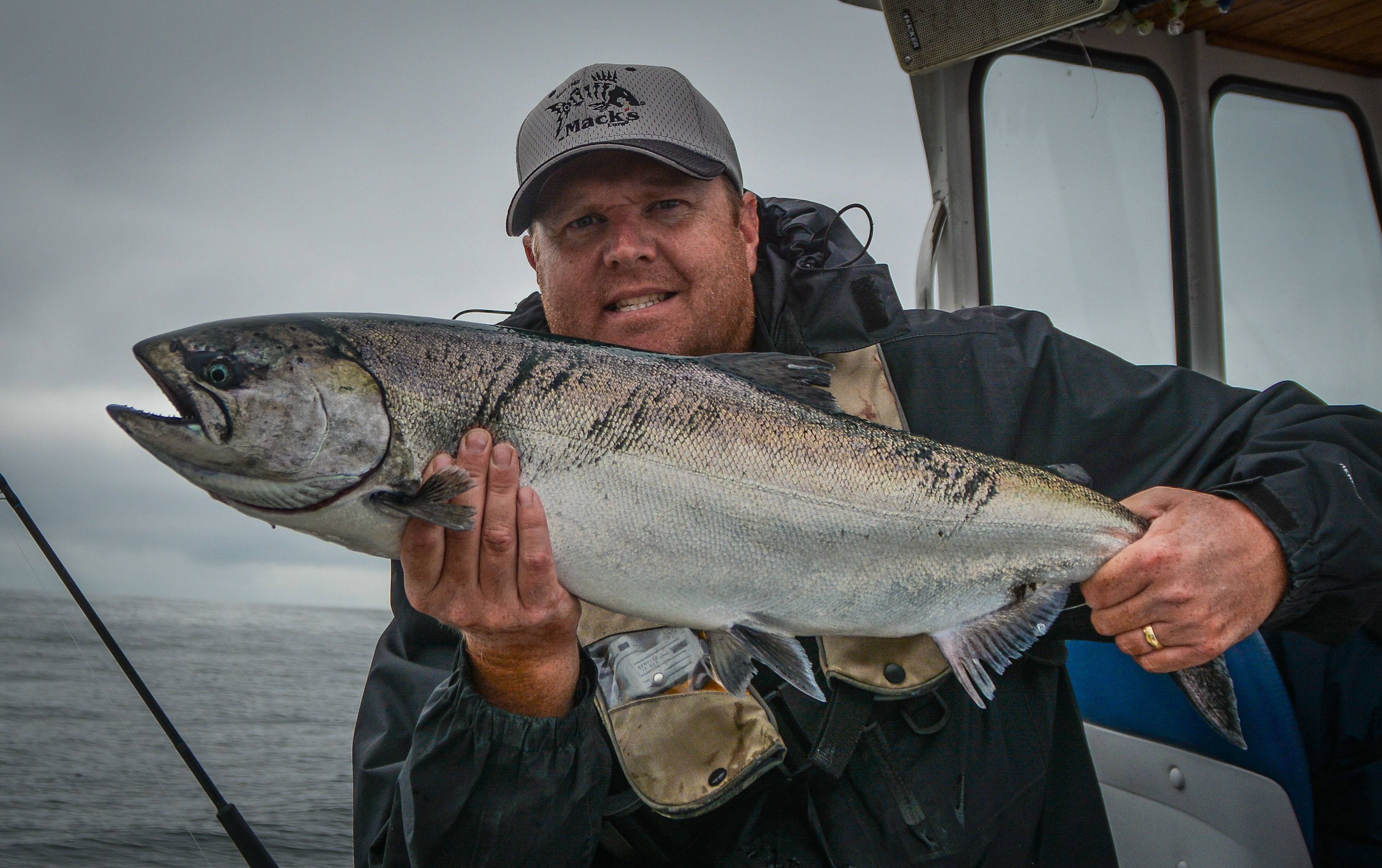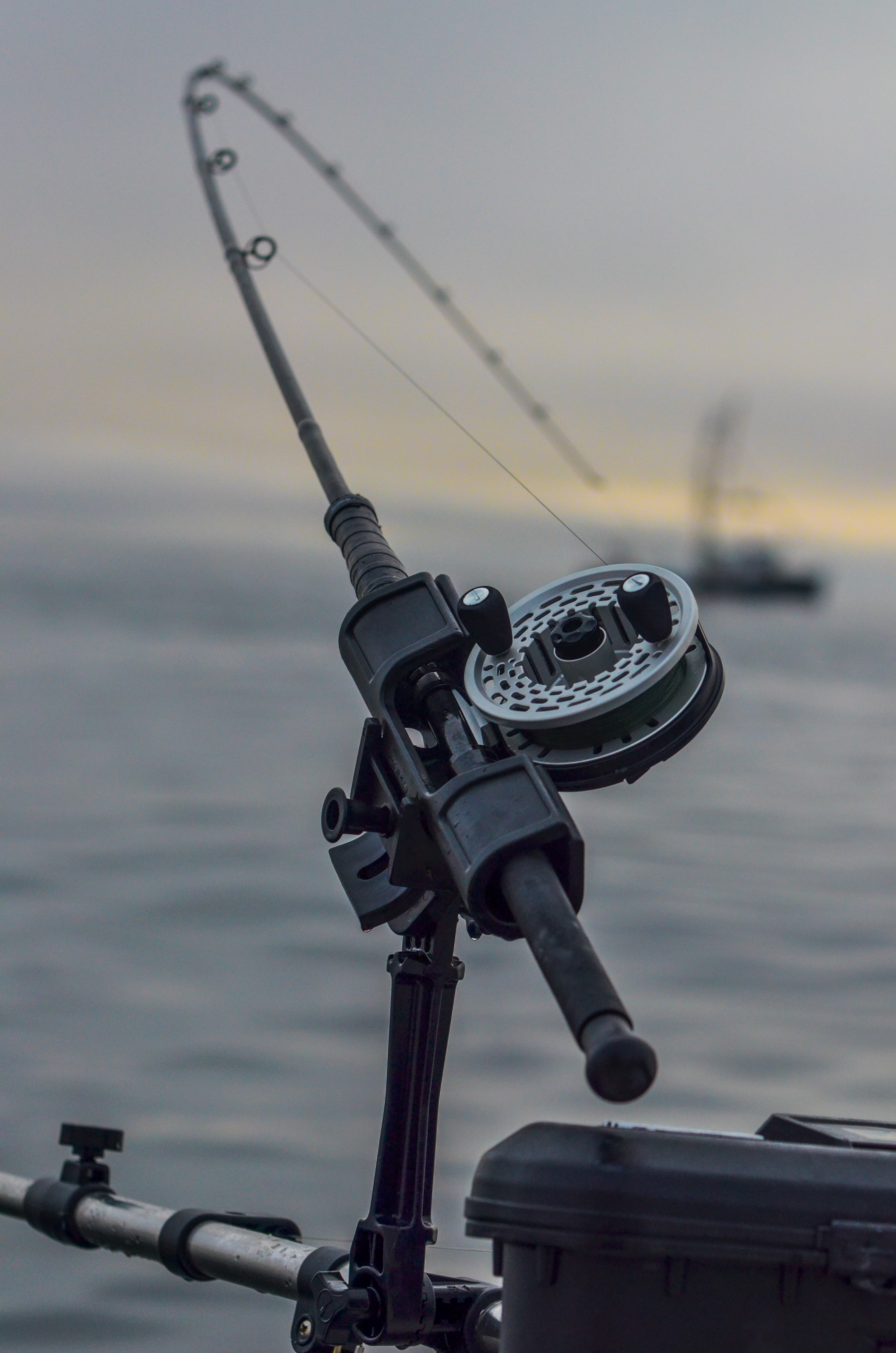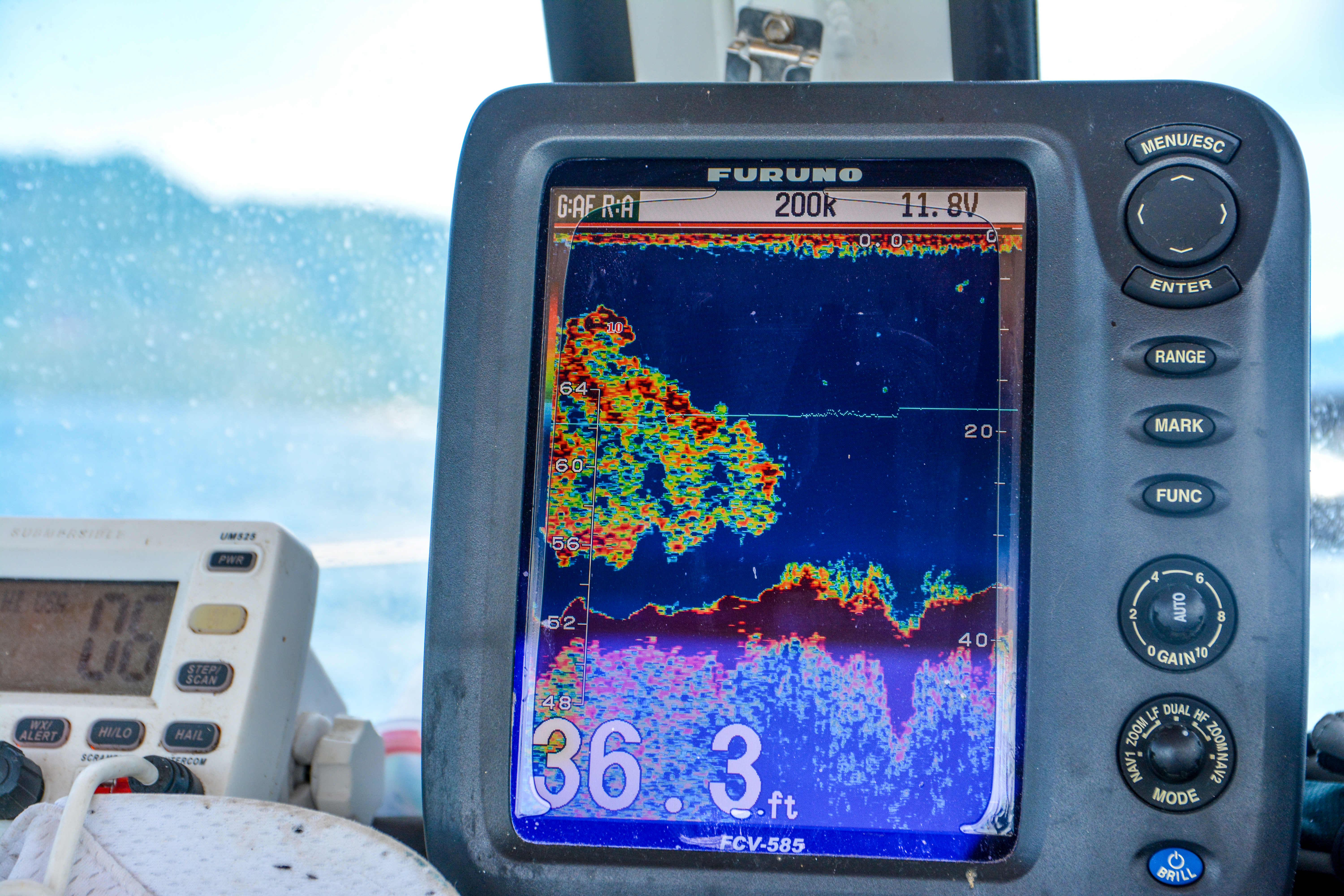Search
Latest Articles
The Salmon Highway
by Jason Brooks, July 07, 2019
Heading out to the deep blue ocean of the Pacific leads you to the “Salmon Highway”. Once you leave the protected waters and head out into the ocean the floor is a wide ledge before it hits the abyss of the continental shelf. Large flats starting around 150 feet and slowly sloping out to 350 feet make up the highway. Currents here are mild compared to the compressed waters near shore and make it easy for salmon to migrate. Bait balls are pushed around by feeding Chinook and Coho and are often forced up to the surface where birds take advantage of the small baitfish with nowhere to go.
On a foggy morning we headed out to the Highway. Looking south we noticed some bright lights reflecting off the water and cutting through the fog. It was a commercial troller and soon another one was to our north. Slowing the boat to idle and looking around the two troller’s soon turned into a few more and then a few more and before we realized it we were surrounded by commercial boats. As the morning fog lifted it revealed twelve commercial vessels trolling past in every direction. We were on the “salmon highway” and it seems it was rush hour traffic.
This is big and open water and a bit intimidating if you don’t know what to look for. My first time out fishing the highway was much easier thanks to the commercial anglers already on the fish. But seventeen miles out is a long ways from shore so be sure to use the right boat and safety gear. The currents had pushed the fish out towards the edge of the shelf but most of the fishing is done closer to shore, from 3 to 8 miles out. A good sonar unit will locate the fish for you and a good sign that you found the highway is when the fish finder screen is loaded with fish from the top to the bottom. This means traveling fish that are on the move, mostly large adult fish making their way back to the spawning grounds.
The highway starts up north, as far as Kodiak Island and the gulf of Alaska. By late June the Chinook and Chums are starting south, chasing the Sockeye and Pinks that have already begun their journey. Coho linger and start a bit later. The Haida Gwaii islands will have migrating fish go by as early as May and full migration a few weeks later in June. By late July all of the fish are on the move and early August is the height of the migration past Nootka and Vancouver Islands.
Salmon destined for the Frasier river system number in the millions, same with Puget Sound. Continuing further south the Columbia river see’s nearly a million fish depending on the year and species. There are some runs heading to Oregon’s Rogue river region and the mighty Sacramento of California passing under the Golden Gate Bridge. All of these fish will be on the highway at the same time, intermixed and you never know where that fish is heading to. This is what makes this fishery so interesting. When a fish comes to the net it always crosses my mind, where is “home”, how far is the journey this fish is on.
Not only is each species an intermix of stock and where they are from but the entire highway is a melded blend of species. Coho are known to be top-water salmon, often seen jumping and surfacing. Chinook are deep water fish and tend to stay near the bottom and Chums can be found mid-water but when a bait ball comes onto the screen it seems all of the fish are blended together. Working a bait ball back and forth with a “figure eight” pattern results in multiple hook-ups with doubles and even triples common. If you have a rod in the water it is likely it will be bent over with a fighting fish when you find the highway. Always be ready when putting gear out as the Coho will come right up to the prop wash and grab spoons or herring.
It is common to catch dozens of fish a day when fishing the highway. Barbless hooks are a must and careful fish handling is needed. The brief stop at the boat needs to be quick so the fish can continue on. When retention limits are allowed then it is best to keep the fish that are mortally hooked instead of just trying to keep the largest fish of the day. The fish are aggressive and spoons keep mortality down.
The open ocean calls for tactics that will intercept the moving fish. This is where spoons are a good option as they are always “fishing” unlike bait that gets hit and if the hook doesn’t stick then you need to reel up and re-bait. When a salmon short strikes a spoon and it doesn’t come free from the downrigger clip you can keep on trolling. If you prefer to mooch then kicking the motor into neutral and lowering the bait down will get you fish but be aware of the rollers of the open ocean. I am prone to sea sickness and mooching is not the technique I prefer for this reason as rolling along the waves is a good way to get sick. But if you can handle the waves then there is nothing better than the grab of a Chinook while holding the rod in your hands and setting the hook. Since the fish are on the move another “old school” tactic is to troll large Tomic spoons. This is a high speed trolling technique and can feel more like you are targeting sailfish than salmon.
Since the highway is located along the continental shelf from Alaska to California it is best to use the right boat. It should be able to handle a long ride out to the fishing grounds and seaworthy. Double main engines are a plus so you can make it back if one stops working. Radar is a must, especially since commercial boats will be in the area and so will ocean liners and even the possibility of a cruise ship going by. Keep in mind that commercial trollers have several cables out on booms and that they can’t turn very quickly. If you are in the path of a commercial troller and you can see the boat then you are in their way. The radar helps in fog and bad weather but it also can let you know how close you are to a fast approaching troller.
Safety should be your top priority and a GPS unit, compass and radio are a must. It is best to fish the highway with a “buddy boat” and keep in contact with each other. Plus, with two boats out searching for the fish you will find them twice as fast. Fishing the highway means being ready, properly equipped and making good decisions about finding the fish and responsible angling. Monitor weather conditions as well as ocean conditions as this is not a safe fishery if you are caught off-guard. Catching fish is fairly easy once you merge into rush hour fish traffic on the salmon highway which is why you should slow down and enjoy this summer fishery.
Jason Brooks hails from North-Central Washington. The son of a fishing guide, Jason is an avid hunter, angler, outdoor photographer and published writer. He resides in Puyallup with his wife and two boys.



